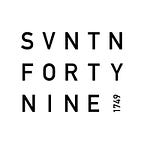Choosing the Likelihood Functions in Bayesian Marketing Mix Modeling
Bayesian Marketing Mix Modeling (MMM) is not just a statistical method; it is a lens through which marketers, Chief Marketing Officers (CMOs), and data scientists can view the intricate tapestry of market dynamics. At the heart of this methodology lies the likelihood function, a mathematical expression that breathes life into data, transforming numbers into actionable insights.
For Data Scientists:
Data scientists use sophisticated tools to transform raw data into valuable insights. One such tool is the likelihood function, especially important in Bayesian Marketing Mix Modeling (MMM). This function helps update the model parameters as new data comes in, ensuring the model stays current with real-world conditions.
By applying a likelihood function, data scientists can assess how likely different parameter values match the observed data. This approach goes beyond simple model fitting; it’s crucial for understanding market trends and accurately determining the effectiveness of marketing investments in terms of return on investment (ROI).
For Marketers:
The essence of marketing lies in understanding and influencing consumer behavior. Marketers can employ likelihood functions to dissect the impact of each marketing channel. Consider a scenario where digital ad spend and sales data are available; the likelihood function can help discern the probability of achieving a certain level of sales, given a specific ad spend. This is not mere number crunching; it’s a way to narrate the story of consumer response to marketing stimuli.
Imagine you are evaluating a campaign’s performance; a likelihood function allows you to translate data into meaning. It can tell you not just how effective the campaign was, but it can also provide a probability-based landscape of how different levels of investment could translate into sales. This is crucial for making decisions that are not based on gut feelings but on probabilistic evidence of what has worked in the past.
For CMOs:
For a CMO, the likelihood function in Bayesian MMM is a compass that points to the true north of decision-making. It allows you to advocate for strategies with a clear view of their potential effectiveness. When proposing a new marketing initiative, the likelihood function equips you with a predictive gaze; you can forecast the potential uplift in sales and weigh it against the cost of the initiative.
This probabilistic approach mitigates risk and empowers CMOs with the foresight needed in today’s volatile market. It’s about creating a narrative that binds budget decisions to expected outcomes, with the credibility of data-driven insights.
The Role of Likelihood Functions in Bayesian MMM
The likelihood function acts as a bridge between theoretical models and observed data. It assesses the plausibility of data given a set of parameters. When you see how the likelihood changes with different parameter values, you are essentially looking at a landscape of possibilities, representing different scenarios of market response.
Types of Likelihood Functions and Their Applications:
- Normal Distribution: The go-to model when residuals are assumed to be evenly distributed around the mean. It is the starting point for many analyses.
- Student-T Distribution: The real world is messy, and data often come with outliers. The StudentT distribution does not get swayed by these outliers, offering a stable view of the data’s central tendency, which is crucial when making decisions based on exceptional data points. This can often apply in the context of FMCG & volatile metrics such as web visits.
- Poisson Distribution: When dealing with counts, like the number of clicks or store visits, the Poisson distribution shines. It assumes that each event is independent, a reasonable assumption for many marketing activities.
- Negative Binomial Distribution: But what if the counts are not so well-behaved? What if there’s variability that the Poisson distribution can’t capture? Enter the Negative Binomial distribution, which introduces an extra parameter to handle such over-dispersion.
- Quantile Distribution: Sometimes, the mean isn’t the best measure, especially when the distribution is asymmetric. The Quantile distribution allows for the modeling of different percentiles, offering a clearer picture of potential outcomes at sales thresholds, for instance seasonal highs or lows.
- Log Normal Distribution: When sales data are right-skewed & non-negative.
Incorporating these likelihood functions into a Bayesian MMM framework equips marketing professionals with a sophisticated toolkit for making data-informed decisions. By selecting the appropriate likelihood function, they can better understand and predict the impact of marketing strategies, leading to more effective and efficient allocation of resources.
This deep dive into the world of likelihood functions is not an academic exercise; it’s a practical guide for navigating the complexities of modern marketing. For those ready to embrace this advanced approach to marketing analytics, our Bayesian MMM software at 1749.io stands ready to assist. Explore how our tools can enhance your marketing strategies, and for a tailored experience, feel free to book a call with our experts.
